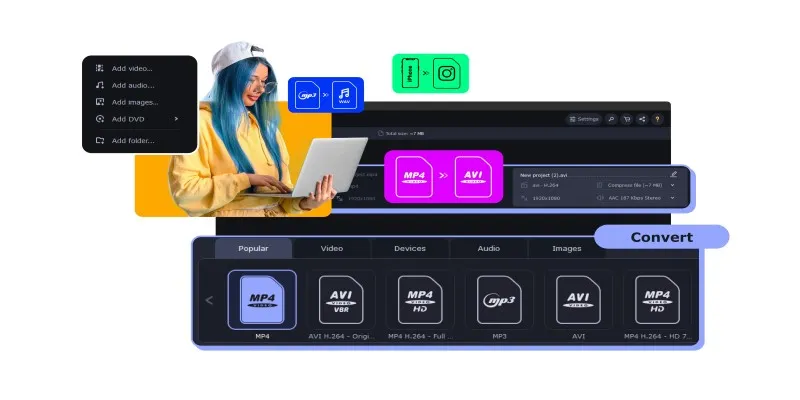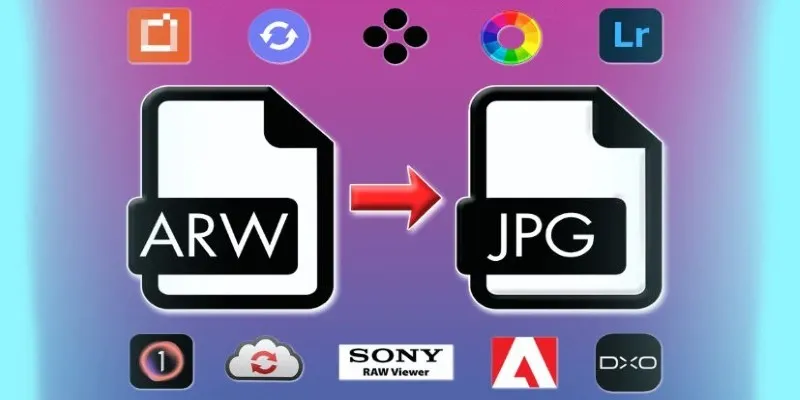NTSC vs. PAL: Key Differences in Analog Television Formats
Before digital television took over, NTSC and PAL were the two dominant analog television formats that shaped how people watched TV. These formats determined how televisions transmitted, displayed, and interpreted video signals across different regions. Although both served the same purpose, they had significant technical differences that influenced picture quality, frame rate, and color reproduction. Understanding these differences is essential, especially for those dealing with video production, gaming, or converting old footage.
The Origins and Global Adoption of NTSC and PAL
NTSC (National Television System Committee) was invented in the United States in 1941 as the initial color television standard. It was adopted extensively in North America, Japan, and parts of South America. The system was intended to be compatible with the early black-and-white television system, which implied that older TVs would still be able to receive the new color transmissions without needing an overhaul. Although revolutionary when first introduced, NTSC had its own problems, especially regarding color accuracy and stability. The use of a fixed subcarrier color frequency by the format sometimes caused moving colors, necessitating manual tweaking.
PAL (Phase Alternating Line) was developed in 1963 by German engineers to solve some of the limitations of NTSC. PAL immediately became the norm in Europe, Asia, Africa, and Australia. The primary reason for developing PAL was to enhance color stability and picture quality, especially in areas where broadcast signals are irregular. Unlike NTSC, which had color drift problems under some conditions, PAL introduced a phase-alternating method that reduced those problems. The inclusion of a delay line mechanism facilitated compensating for transmission flaws, making PAL more consistent in providing uniform colors under varying lighting conditions and environments.
Technical Differences Between NTSC and PAL

One of the most notable differences between NTSC and PAL is the frame rate. NTSC operates at 30 frames per second (29.97, to be precise), while PAL runs at 25 frames per second. This difference stems from the electrical power standards in each region—NTSC countries typically use a 60 Hz power grid, while PAL regions use a 50 Hz grid. The frame rate affects how motion is captured and displayed, with NTSC appearing slightly smoother but PAL offering a more cinematic look. In motion-heavy content, such as sports broadcasts and action films, NTSC’s higher frame rate provides an advantage in capturing fast movement with reduced motion blur.
Resolution is another distinguishing factor. NTSC uses a resolution of 525 lines per frame, while PAL has 625 lines per frame. This means PAL generally offers better image clarity, particularly for static images and detailed visuals. However, due to the lower frame rate, fast-moving content can sometimes appear less fluid than in NTSC. The additional lines in PAL contribute to a sharper picture, making it preferable for television broadcasts where image clarity is prioritized. NTSC, on the other hand, compensates with its smoother frame transitions, making it more suitable for content with continuous motion.
Impact on Video Playback and Compatibility
The choice between NTSC and PAL becomes a major concern when dealing with international media. Older televisions and video players were built to support only one format, meaning an NTSC tape wouldn’t work on a PAL system and vice versa. While modern digital devices are often multi-format and capable of handling both standards, older analog equipment remains restricted to its original format. This limitation made it challenging for broadcasters and video distributors to create content that could seamlessly transition across regions without requiring format-specific adaptations.
DVDs and gaming consoles were also affected by these format differences. Many video games released in PAL regions ran at a slower speed compared to their NTSC counterparts due to the 25 fps frame rate. This difference in speed occasionally led to synchronization issues with sound and gameplay. Some PAL games also experienced letterboxing, where black bars appeared at the top and bottom of the screen to compensate for differences in resolution. Additionally, movies filmed at 24 frames per second needed slight adjustments when converted for PAL, which sometimes resulted in a small but noticeable speed increase. Viewers accustomed to the original pacing of a film or game could detect these changes, impacting their overall experience.
The Shift to Digital and the Legacy of NTSC and PAL

With the transition to digital television, the importance of NTSC and PAL has diminished significantly. Modern broadcasting and video formats, such as HDTV and online streaming, are not limited by analog constraints. Digital signals use standardized resolutions and frame rates that can be adjusted for compatibility across different regions without the limitations of NTSC or PAL. The widespread adoption of digital video formats such as MP4, AVI, and MKV means that video content is now far more adaptable, with encoding options allowing users to select frame rates and resolutions based on personal or regional preferences.
However, the legacy of these analog formats still lingers. Many older recordings, VHS tapes, and even some DVDs were produced specifically for NTSC or PAL systems. Video archivists and restoration specialists continue to work with these formats, ensuring that historical footage remains accessible and visually intact. Additionally, retro gaming enthusiasts and collectors often encounter NTSC and PAL differences when using vintage gaming consoles or trying to preserve classic media. In the gaming community, the variations in speed, resolution, and compatibility between NTSC and PAL versions of classic titles continue to be a topic of discussion, with some gamers preferring one format over the other due to specific performance characteristics.
Conclusion
Although the world has largely moved on from NTSC and PAL, their influence is still present in many ways. The differences in frame rates, resolution, and color accuracy shaped the development of television technology for decades. Even as digital formats dominate the modern landscape, understanding these analog systems is valuable for anyone working with legacy content, whether in video production, gaming, or media preservation. The knowledge of NTSC and PAL remains useful for historians, collectors, and media professionals who handle vintage video material.
Related Articles

How to Use Tags and Labels to Organize Your Files: A Step-by-Step Guide

6 Ways to Automate Security and Identity Tools for a Safer Business

How to Colorize Your Black and White Videos: 5 AI Tools You Should Try

7 Best M4A to WAV Converters for High-Quality Audio Transformation

Improve Your Videos with These Top 4 Free AI Video Enhancers

Best Free Online Converters for Converting JSON to CSV Quickly

Best Free Online Tools to Extract Audio from Any Video

Pixel vs. Dot Explained: Mastering Photo Resolution for Printing

Best Tools for 1920x1080 Image Conversion: Comprehensive Analysis

Why You’ll Need a New App to Use Gemini on Your iPhone

Top 9 Apps to Identify Anything Through Your Phone's Camera

9 Powerful Chrome Extensions for Effortless Screenshots
Popular Articles

Nuke 16.0 Brings Multishot Editing and GSV Support to Compositors

How to Turn Flip Video Camera Files into MP4 or AVI

Improve Your Shift Management with These Excel Alternatives

How to Capture Your Best CSGO Gameplay: A Simple Guide for Players

10 Essential Martech Tools for Building a Smart Martech Stack for Startups

Top 14 Featured Image Plugins and Tools for WordPress: A Comparison

A Comprehensive Guide to Better Manage WordPress Pages with Nested Pages Plugin

Kernel Video Repair Review: Everything You Need to Know

LumaFusion: Pro-Level Video Editing from the Palm of Your Hand

Tools in the Cloud: The Future of Work Made Simple

Best Code Editor Apps in 2025 for Fast, Clean Coding

 mww2
mww2